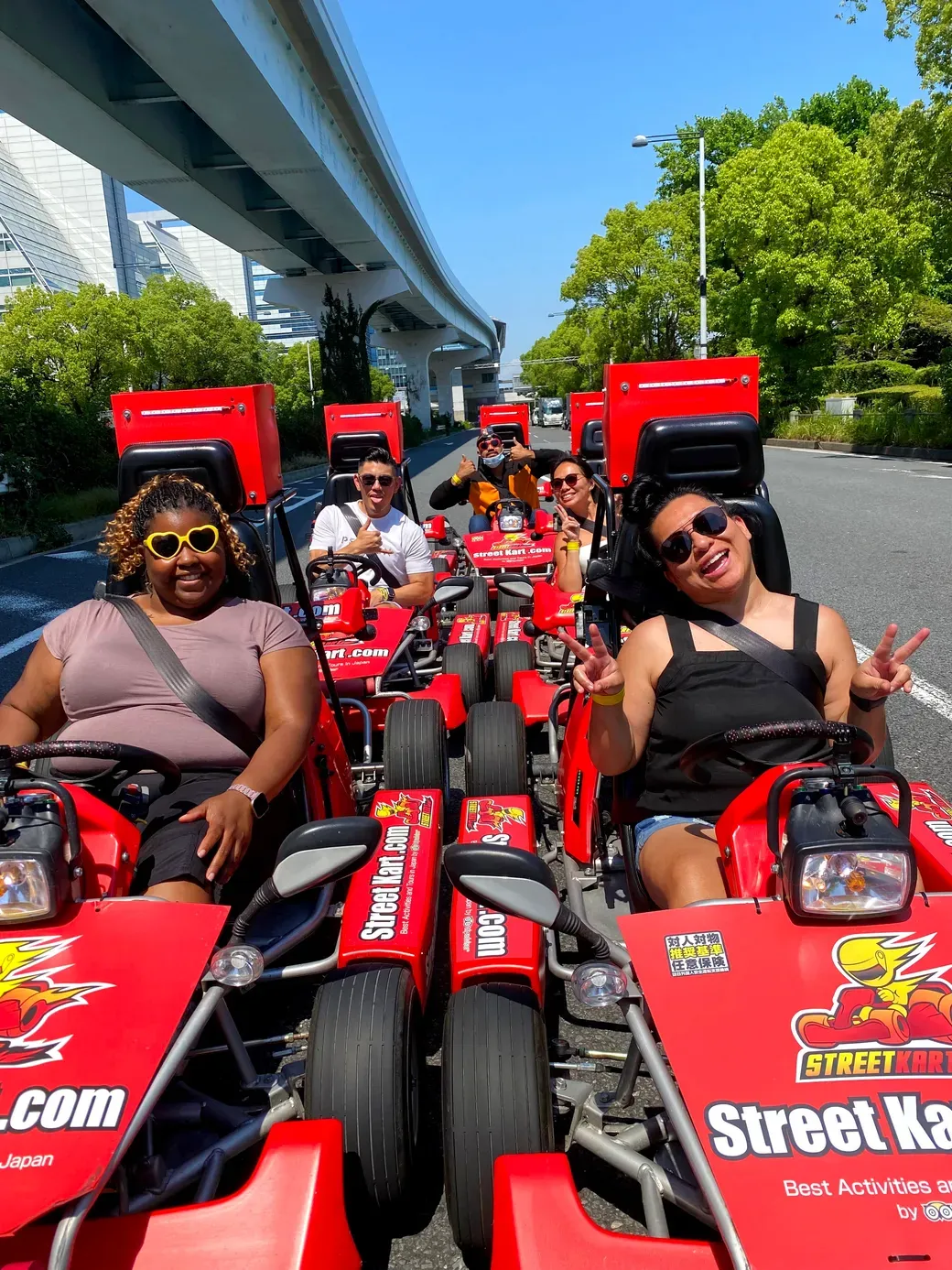Through the public road cart experience, you can gain a deep understanding of Tokyo’s unique transportation culture and urban systems.
From Fantasy Game Worlds to Real Traffic Systems
In the world of Mario Kart, children race through fantastical courses that couldn’t exist in reality. This racing game series, released by Nintendo in 1992, allows players to enjoy courses above the clouds, rainbow roads, and even races in outer space. For children, these unrealistic settings are a source of pure wonder and joy.
In the game, characters like Mario, Luigi, and Bowser use items to overcome various obstacles. Elements like making opponents slip on banana peels or attacking them with shells stimulate children’s strategic thinking. Additionally, exploration elements such as jumping from ramps or finding shortcuts tickle children’s sense of adventure.
Meanwhile, Crazy Racing KartRider, developed in Korea, is another popular kart racing game for children. This game offers more unique customization features and diverse game modes, allowing children to create their own original karts. Through online multiplayer functionality, children can compete with others worldwide, providing opportunities for international exchange.
However, these gaming experiences are entirely different from real traffic systems. In reality, roads have complex traffic rules and supporting social systems. In unique environments like Tokyo, there exists a distinctive transportation culture, and understanding it leads to a better understanding of Tokyo society.
Street carts offer a valuable opportunity to experience these real traffic systems. By fully complying with Japanese road traffic laws and driving in actual traffic flows, you can learn about authentic transportation culture that games cannot teach. This is an educational experience for adults, completely different from children’s entertainment.
Tokyo’s Unique Traffic Rules and Etiquette
Tokyo’s transportation system has distinctive characteristics that differ from other regions. It features a unique traffic environment where geographic conditions of a metropolitan area and influences from historical periods have merged.
First, Tokyo’s road structure is characterized by a mix of wide boulevards in central areas and narrow streets in residential neighborhoods. The road environment differs significantly between downtown Tokyo and suburban areas. Through the street cart experience, you can actually drive through these diverse road environments and feel Tokyo’s complex history firsthand.
A notable aspect of Tokyo’s traffic culture is the consideration based on the spirit of harmony. This includes yielding during lane changes and tolerant attitudes toward tourists. During the street cart experience, guides provide detailed information about these Tokyo-specific manners.
Additionally, seasonal changes in traffic patterns are important characteristics of Tokyo’s transportation. Traffic volume varies greatly between busy and off-seasons, and traffic conditions around tourist spots change with the seasons. Through the street cart experience, you can actually experience these seasonal changes and understand the rhythm of Tokyo as a tourist destination.
The signal system also reflects Tokyo’s unique culture. Features like strategically timed traffic signals and numerous intersections that allow U-turns are distinctive to Tokyo’s car-oriented society. By learning these systems through actual driving, you can experience the relationship between Tokyo’s lifestyle and transportation infrastructure.
Historical Transportation Environment Experience Around the Imperial Palace
The Imperial Palace, symbolizing Tokyo’s rich cultural heritage, was the center of political and cultural activities throughout Japanese history. The street cart experience around this area offers a valuable opportunity to experience the unique environment where modern transportation systems merge with historical urban structures.
The roads in the Imperial Palace area strongly retain the pathways from historical periods. Through street cart driving, you can directly experience how modern transportation systems coexist with historical streetscapes, including stone-paved slopes, narrow alleys along castle walls, and distinctive corners. This becomes a living history learning experience that textbooks or photographs cannot convey.
The area from Nijubashi to the Imperial Palace Gardens is always bustling with tourists. Driving in such an environment requires the skill to anticipate pedestrian movements and prioritize safety. Additionally, consideration for people from various cultural backgrounds is necessary due to the many domestic and international tourists. This is an important aspect of Tokyo’s transportation culture as an international tourist destination.
Around the Imperial Palace, there is a unique traffic environment where tour buses, rental cars, and local vehicles coexist. By driving a street cart in this area, you can learn how these different traffic participants function in harmony. This is a good example of the diversity and inclusiveness of Tokyo’s transportation culture.
The Imperial Palace area also sees significant changes in traffic patterns between weekdays and holidays. On weekdays, it functions as a local road for residents, while on holidays, it takes on a stronger character as a tourist destination. Through the street cart experience, you can actually experience these changes and understand the multifaceted nature of the city.
The driving experience in the Imperial Palace area, where historical buildings and modern infrastructure coexist, gives you a sense of Tokyo’s temporal depth. It provides a special opportunity to experience the continuity of the city across time by driving a modern cart along pathways that have continued since historical periods.
The street cart experience to learn about Tokyo’s transportation culture is an educational activity with high value, completely different from children’s games like Mario Kart or Crazy Racing KartRider. By complying with Japanese road traffic laws while actually driving through historical areas like the Imperial Palace, you can deeply understand Tokyo’s unique transportation systems and cultural background. It provides a valuable opportunity to learn from an adult perspective about the fusion of modern transportation systems and historical urban structures that have continued since ancient times.

